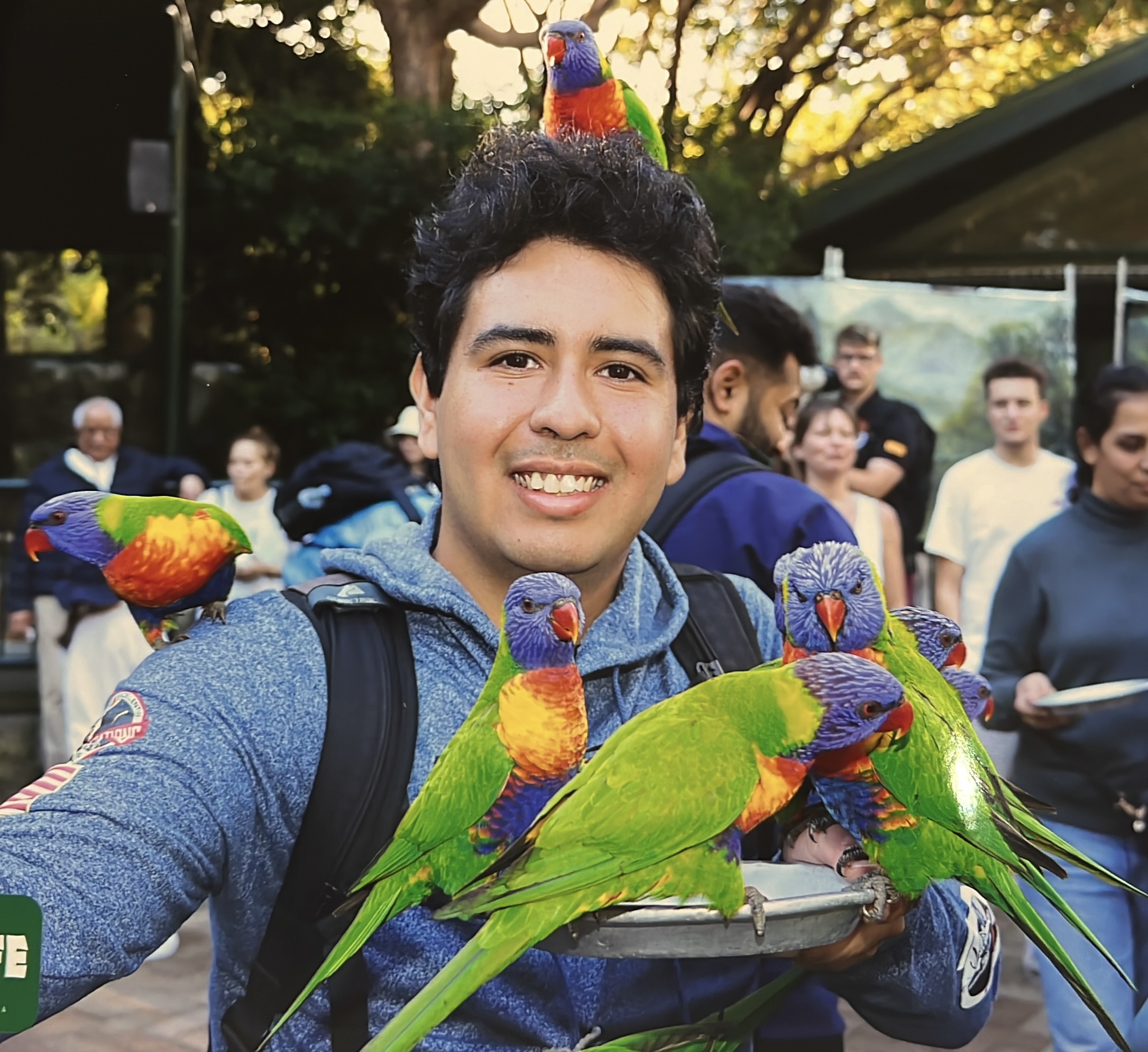The Man Who Listened to the Dream of a Bird
Published:
Birds have long fascinated us. Their iconic flights, vibrant plumage, and diverse melodies inspired culture, poetry, music, science, and engineering. In the last decades, we have also realized that they are insanely intelligent. They reason, solve problems, and learn in ways that rival primates. They are, quite literally, truly cognitive creatures.
There are thousands of species of birds, but there’s one that became a scientific superstar: the zebra Finch. Barely the size of a palm, these birds have taught us lessons about learning, memory, and even dreams.
This is the story of Gabriel Mindlin, the man who listened to the dream of a bird.
Meet the Zebra Finch: Tiny Bird, Big Discoveries
Zebra finches (Taeniopygia guttata) are small songbirds native to Australia. Recognizable by their black-and-white striped chests and bright orange beaks, they might not look like neuroscientific pioneers—but they are.
These birds are among the most studied animals in neuroscience. Why? Because they offer unique insights into how brains learn and process complex behaviors—especially vocal learning. Much like humans, male zebra finches learn to vocalize by mimicking their fathers during a sensitive developmental period. Their vocal learning circuits even resemble the brain pathways we use for speech.
But they also serve as great animal models for sleep and memory.
In 2000, a discovery by Dave and Margoliash, published in Science, found that when zebra finches were asleep, the same brain regions active during song production lit up again. In other words, the birds were replaying the songs they had practiced–in their dreams (Dave & Margoliash, 2000). This phenomenon, named as replay, showed that sleep isn’t just for rest. It’s also for learning.
So, by replaying neural patterns during sleep, the brain strengthens memory traces, reinforcing what was learned during the day. But it also hints at something deeper: subjective experience. Could these birds be dreaming?
Turning Muscle Movement into Sound
This is where the main character of our story enters.
One day, Gabriel Mindlin, an Argentinian physicist specializing in the biomechanics of vocal production, received an unexpected email from his colleague Amish Dave (yes, the same researcher who discovered replay in zebra finches). It turned out that Amish had accidentally left the recording equipment on while a zebra finch slept. To his surprise, the data showed that the bird’s throat muscles were still moving, just as they did when the bird was singing. Although the bird was asleep, its vocal apparatus was “singing” silently.
That’s when Gabriel and Amish had a revolutionary idea.
For years, he had been working on a model that translated muscle movements into synthetic vocalizations. He had used it for human speech. Could he now use it to reconstruct the silent song of a sleeping bird? If the bird’s muscle movements during sleep matched those during wakeful singing, the model might reproduce the song the bird was dreaming.
So, Gabriel fed the data into his program.
The next morning, with a cup of coffee in hand and headphones on, he pressed play.
And he laughed
What he heard was the zebra finch’s song—a dream without sound, reconstructed from nothing but muscle activity, just like he did with humans. For the first time in human history, someone was listening to the dream of another species. But this achievement was more than just poetic. It was groundbreaking.
Months later, he and his team published their findings in Nature (Amador et al., 2013). Their work combined physics, dynamic systems theory, and neuroscience to do something once thought impossible: to make animal dreams audible. This experiment pushed the boundary of what we know about non-human consciousness. It opened the door to asking not only how animals experience the world but whether we might one day see or hear what it’s like to be another creature.
A window into their Umwelt.
📚 References
- Dave, A. S., & Margoliash, D. (2000). Song Replay During Sleep and Computational Rules for Sensorimotor Vocal Learning. Science, 290(5492), 812-816. https://doi.org/10.1126/science.290.5492.812
- Amador, A., Perl, Y., Mindlin, G. et al. (2013). Elemental gesture dynamics are encoded by song premotor cortical neurons. Nature, 495, 59–64. https://doi.org/10.1038/nature11967
